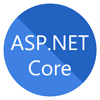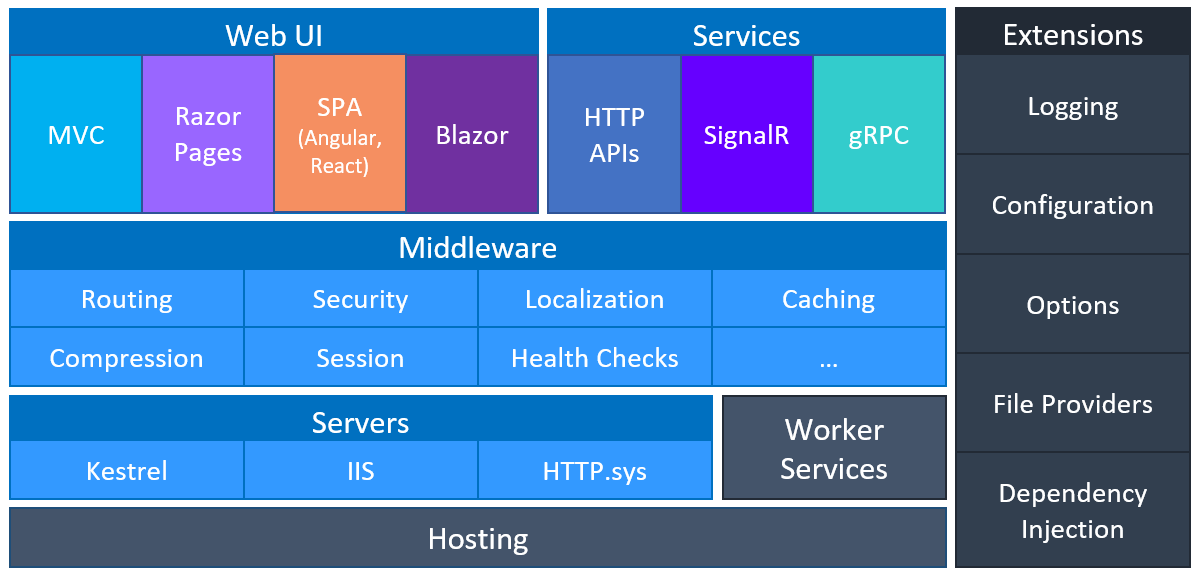25
AprIntroduction to ASP.NET Core

ASP.NET Core Course
ASP.NET Core: An Overview
ASP.NET Core is a lightweight, open-source, and cross-platform unified framework for developing web UI and web APIs. It is a complete redesign of existing ASP.NET 4.x, with architectural changes that make it a leaner, modular, and high-performance framework. To get more knowledge about ASP.NET you need to get ASP.NET Core Certification which will in future help you in your career.
Read More: Top 50 ASP.NET Core Interview Questions and Answers for 2024
Evolution of ASP.NET Core
Features of ASP.NET Core
- Open-source
- Cross-platform framework which runs on macOS, Linux, and Windows.
- Runs on the top of .NET Core or full .NET Framework having version 4.6+.
- A unified framework for building web UI and web APIs.
- Built-in dependency injection.
- New lightweight and modular HTTP request pipeline.
- Ships entirely as NuGet packages.
- Side-by-side versioning when targeting .NET Core.
- Built-in support for SPA using client-side frameworks like Angular, React, Vue, etc.
- Supports IIS, Nginx, Apache, Docker, or self-host deployment.
ASP.NET Core Architecture

Read More: What is an ASP.NET Core Developer? Skills to become ASP.NET Core Developer
ASP.NET Core Version History
ASP.NET Core Performance Benchmarks
ASP.NET Core is the fastest framework which can serve 2300% more requests per second as compared to ASP.NET 4.6. It's around 20 times faster than Node.js.
ASP.NET Core Anatomy
In ASP.NET Core everything starts with Program.cs, Main Method. ASP.NET Core apps require a startup class which serves as an alternative to Global.asax in ASP.NET 4.x. It uses a cross-platform Kestrel web server to serve the request and response. Here, IIS/Apache Tomcat/Nginx works as a delegation web server, and is used to delegate the incoming request to the internal Kestrel web server.
Differences Between ASP.NET Framework and .NET Core
.NET Core is a general-purpose development platform, while ASP.NET Core is a framework for building web applications on top of .NET Core.
| Parameters of Comparison | .NET Core | ASP.NET Core |
| Parent Platform | .NET framework is the parent platform of the current multi-platform framework, .NET Core. | ASP.NET is the parent framework of the ASP.NET Core. |
| Full Name | The full name of the .NET Core is Network Enabled Technologies Core. | The abbreviation ASP.NET Core stands for Active Server Pages Network Enabled Technologies Core. |
| Released year | This open-source, crossed-source platform was initially released in the year 2012, a decade after the release of ASP.NET Core. | The released year of ASP.NET Core is 2002. |
| Latest Versions | The latest version of .NET Core is .NET Core 3.1. | The latest version of ASP.NET Core is .NET Core 8.0. |
| Compatible Operating System | The Operating Systems compatible with .NET Core are Windows, Linux, and Mac. | The Operating Systems compatible with ASP.NET Core are Windows, Linux, and Mac. |
| Tooling and Ecosystem | .NET Core has a specialized ecosystem for web development. It provides additional libraries for HTTP requests, client-side scripting, integration with front-end frameworks, and database operations. | ASP.NET Core also seamlessly integrates with popular development tools like Visual Studio and Visual Studio Code, enhancing the development and debugging experience for web applications. |
Read More: Difference Between Asp .Net and Asp .Net Core
Why ASP.NET Core/Benefits of ASP.NET Core?
- Open Source: The entire source code for this .NET Core Framework is available at https://github.com/aspnet, and you can download it.
- Cross-Platform: ASP.NET Core applications can be developed and run on different platforms such as Windows, Mac, or Linux Operating Systems. You can use either Visual Studio or Visual Studio Code or any third-party editor such as ATOM, Sublime, etc. for developing ASP.NET Core applications.
- Unified MVC and Web API Framework: A single controller class can be used to handle both. The Controller in ASP.NET Core (either Web APPs or Web APIs) application will inherit from the Controller base class and return the IActionResult interface.
- Testing and Maintainability: Applications developed using the ASP.NET Core MVC framework can easily be tested and maintained as you can separate different parts of your application into independent pieces and test them independently.
- Excellent developer tools: ASP.NET Core comes with a lot of preloaded tools like Libmam, ReSharper, etc.
What ASP.NET Core doesn't have :
- Global.asax
- Web.Config
- Modules and Handlers
- Typical ASP.NET page life-cycle
What do you think?
I hope you will enjoy the ASP.NET Core. I would like to have feedback from my blog readers on ASP.NET Core Training Online. Your valuable feedback, questions, or comments about this article are always welcome.
FAQs
Q1. What is ASP.NET Core?
Q2. What is ASP.NET Core key concepts?
- Cross-platform Development
- Modularity and Middleware
- Unified Programming Model
- Performance and Scalability
Q3. Why is .NET Core used?
- Microservices and Cloud-Native Development
- Cross-Platform Compatibility
- Modern Development Practices
- Open-Source and Community-Driven
Take our free aspnet skill challenge to evaluate your skill

In less than 5 minutes, with our skill challenge, you can identify your knowledge gaps and strengths in a given skill.






